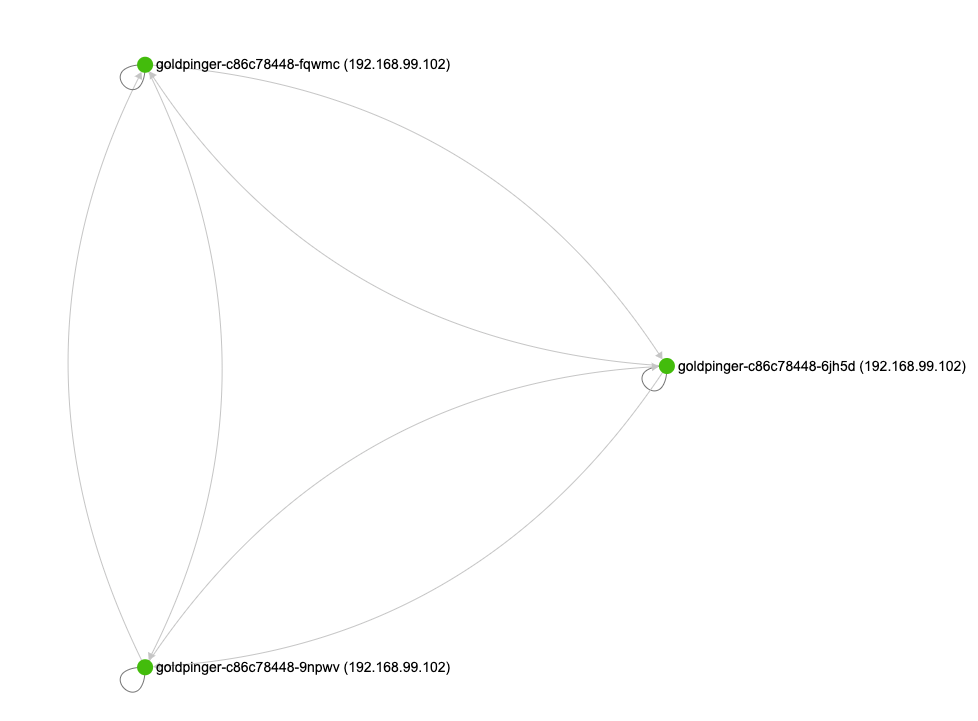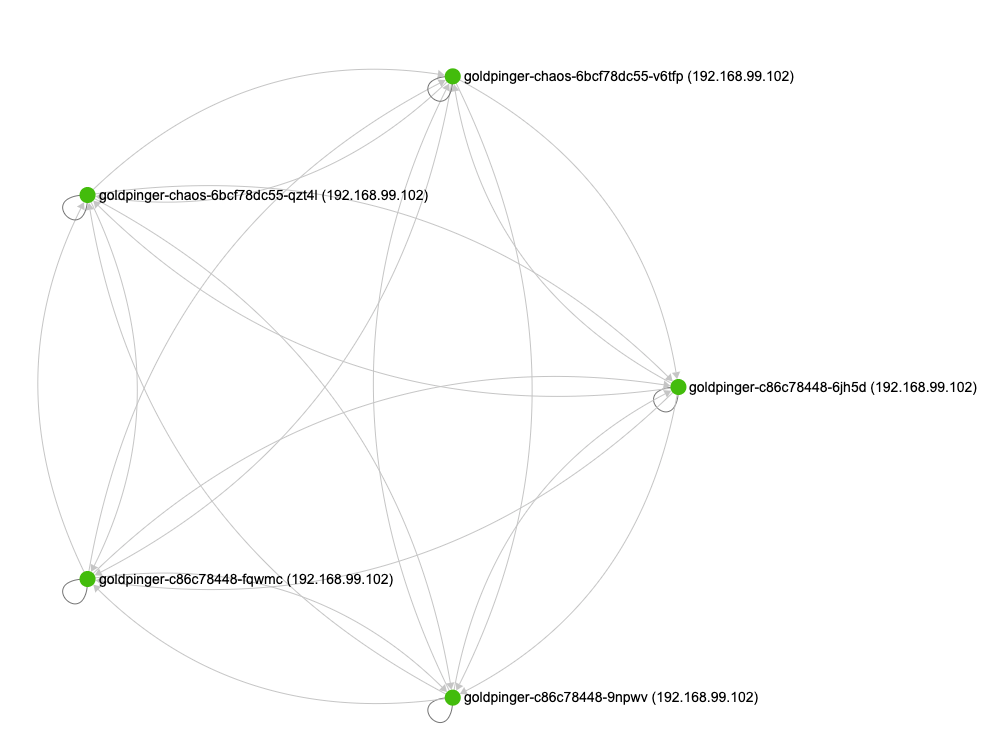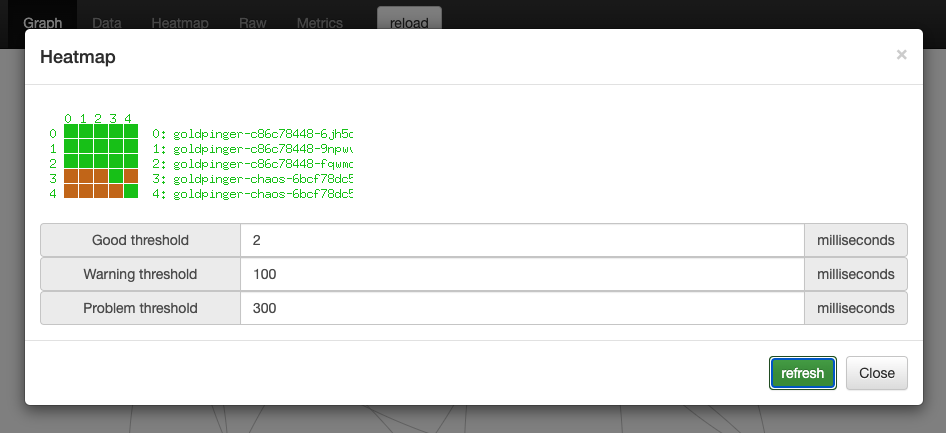Clone deployment and add slowness with tc
Table of contents
Scenario
PowerfulSeal can make a copy of your deployment for you, apply network slowness to the copy, do the validation you need, and then clean it up. All done automatically.
It supports integrating with toxiproxy. This is how it works:
- PowerfulSeal makes a copy of your target deployment
- inside the clone, it adds an extra side-car container running Toxiproxy
- for each port defined on your containers, it will configure a proxy called
auto<port number>, so for example if you have a container running port 80, it will create a proxy calledauto80 - it will use
iptablesto redirect all TCP traffic on that port 80 to the proxy running on a different port - it will add any network issues you configure in the
toxicslist (see available toxics)
That takes care of the ingress proxying. If you’d also like to setup some proxies to remote destinations, configure them in proxies section. Learn more.
Let’s see what that looks like on an example.
Setup
Imagine, that you are running Goldpinger on your cluster to test the connectivity. You might deploy it like this (straight from the readme):
---
apiVersion: rbac.authorization.k8s.io/v1
kind: ClusterRole
metadata:
name: goldpinger-clusterrole
rules:
- apiGroups:
- ""
resources:
- pods
verbs:
- list
---
apiVersion: v1
kind: ServiceAccount
metadata:
name: goldpinger-serviceaccount
namespace: default
---
apiVersion: rbac.authorization.k8s.io/v1beta1
kind: ClusterRoleBinding
metadata:
name: goldpinger-clusterrolebinding
roleRef:
apiGroup: rbac.authorization.k8s.io
kind: ClusterRole
name: goldpinger-clusterrole
subjects:
- kind: ServiceAccount
name: goldpinger-serviceaccount
namespace: default
---
apiVersion: apps/v1
kind: Deployment
metadata:
name: goldpinger
namespace: default
labels:
app: goldpinger
spec:
replicas: 3
selector:
matchLabels:
app: goldpinger
template:
metadata:
labels:
app: goldpinger
spec:
serviceAccount: "goldpinger-serviceaccount"
containers:
- name: goldpinger
image: "docker.io/bloomberg/goldpinger:v3.0.0"
env:
- name: REFRESH_INTERVAL
value: "2"
- name: HOST
value: "0.0.0.0"
- name: PORT
value: "8080"
- name: POD_IP
valueFrom:
fieldRef:
fieldPath: status.podIP
ports:
- containerPort: 8080
name: http
---
apiVersion: v1
kind: Service
metadata:
name: goldpinger
namespace: default
labels:
app: goldpinger
spec:
type: LoadBalancer
ports:
- port: 8080
name: http
selector:
app: goldpinger
When you look it its graph, it looks like this:

Scenario
Now, you can run PowerfulSeal, and ask it to clone and mutate the deployment. Let’s say that we want to add 100ms delay on the ingress traffic, on port 8080.
:warning: be warned, that the tc command will be run in an init container, with NET_ADMIN capability added. Don’t run a random image from the internet like the one in example below.
Note, that the targetProxy is called auto8080 - this is the automaticaly created proxy for port 8080 in the Goldpinger deployment.
config:
runStrategy:
runs: 1
scenarios:
- name: Clone and tc
steps:
- clone:
source:
deployment:
name: goldpinger
namespace: default
replicas: 2
mutations:
- toxiproxy:
toxics:
- targetProxy: auto8080
toxicType: latency
toxicAttributes:
- name: latency
value: 200
# wait three minutes before cleaning up
- wait:
seconds: 180
When you run it (seal autonomous --policy-file toxiproxy.yml), PowerfulSeal will create a new deployment, that matches the same labels, so the goldpinger service will pick them up.
After the pods start, if you look at the graph again, you will see that the new pods are being pinged, and work (albeit slowly).

You can confirm that by looking at the heatmap, and selecting 100ms as a warning threshold, and 300 as error:
